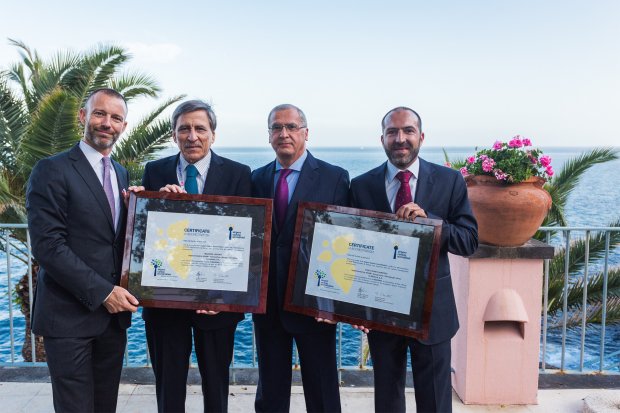Madeira Airports are Carbon Footprint accredited

Madeira and Porto Santo Airports are accredited on the level 1 Mapping, obtaining external recognition of their efforts of voluntary carbon management.
The efforts made by Madeira Airports in the voluntary carbon management culminated this week with the accreditation under the Airport Carbon Accreditation ACI (Airports Council International) program. This accreditation requires a commitment at the highest level of the organization with respect to reduce emissions. Madeira and Porto Santo Airports are now accredited on the level 1 - Mapping, obtaining external recognition of their efforts at the level of voluntary carbon management. The Airport Carbon Accreditation is an independent program promoted by ACI Europe, which establishes an annual accreditation of airports. ANA Airports of Portugal has been seeking the accreditation of the airports of Lisbon, Porto, Faro, Beja, Ponta Delgada, Horta, Flores and Santa Maria, since 2010, having now extended the accreditation to the Madeira airports, based on the harmonization of the processes within the group. The latest numbers released by ACI Europe indicate that 77 airports located in 24 countries are currently certified at one of four levels of accreditation (mapping, reduction, optimization and neutrality), 14 of these airports are carbon neutral. In addition to the European airports, also associated with the ACI certification are 12 airports in the Asia-Pacific, and one airport in the Africa region. Currently the program includes 90 certified airports, which corresponds to about 22% of world traffic. In the 4th year of the program (June 2012 to May 2013), the collective reduction achieved was over 170,000 tons of CO2, enough energy to power 71,000 households for a year. Obtaining Level 1 (mapping) ensures that annually Madeira Airports should account for their carbon footprint and submit it to be verified by an external and independent entity. Additionally, the accreditation is only obtained if there is a commitment at the highest level of the organization to reduce emissions and that this commitment is externally released. Once achieved this goal, ANAM intends to continue the efforts to, not only maintain the accreditation, but as well to implement its management plan for the voluntary carbon and energy efficiency, with the ultimate objective to progressively reduce the carbon footprint.


